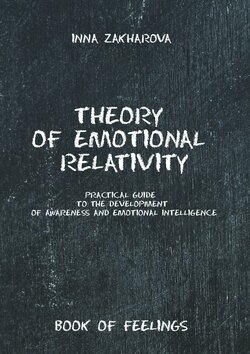Читать книгу Theory of emotional relativity. Practical guide to the development of awareness and emotional intelligence - Inna Zakharova - Страница 19
Fear
Fear. How does it Show up in the Body?
ОглавлениеFear is revealed brightly in our body, we should learn how to notice it.
Body. The very first reaction of the body to fear is the increase of tension in almost all the muscles of the body. The muscles of the shoulder girdle are tightened, the shoulders rise up to the ears, the body slightly deviates back and freezes. There is some muscle tonus in the arms, legs, buttocks, lower abdomen, back of the thighs. You can notice fear expression in raised, tense shoulders. At a low intensity of fear, many small movements of the fingers begin to appear: touching hair, a face, a neck, clothes, etc. Small movements are a clear marker of anxiety. In order to look confident, men often hide their hands behind their backs, but fingers keep tugging behind their backs. A person often shuffles his feet.
Hormones. Adrenaline
Body language. The micro motion “eyebrows up” lasts literally a split second at a slight intensity of fear. Horizontal wrinkles appear on the forehead, the forehead is tense. The eyes widen precisely at the moment of fear, the lips are tense, the mouth is usually horizontally stretched.
Breathing. A vivid breathing pattern appears in fear: it is very superficial, breathing fades. It seems that a person breathed some air in the form of a resource and froze not to give it away.
Look. At a low intensity of fear, when there is no obvious danger, a person searches for the source of this danger, so his eyes are running, twitching and moving sharply from object to object. When the intensity of fear is increasing, the gaze begins to slow down, stop and lose focus. When a person has a very strong fear, he seems not to see anything neither outside nor inside himself, his gaze goes to nowhere.
Inner sensations. Anxiety begins with tremor, a vibration occurs in the body, which is expressed outward through small, fussy movements. Usually in the inner sensations this is accompanied by a strong heartbeat, constriction and pulsation are felt in the abdomen. When fear is increasing, the pulsation goes inside, it accelerates so much that the body becomes immobilized. If you imagine the rotation of the wheel of a bicycle, at first you see the movement of the spokes, but with an increase in speed it seems that it stands still, you see neither movement nor details. When the intensity of fear increases, twitching movements disappear, a state of “freezing” appears, the body is like a wooden one, you do not own it.
Direction. The body slightly deviates back and freezes. There is no motion.
Speech. The voice often has a high tone, phrases become interrogative, intonation rises “yes? …”, “will we go? …”, affirmation is lost, because a person is not sure. Speech becomes fast and steel. At high intensities of fear, the tongue gets numb, a person has lost tongue. At a low intensity of fear, there are fast changes in topics and distraction is observed.
There are people who hide their fear behind their anger “I am so scared that I am angry.” This is a characteristic of counter-phobic behavior. In such cases, the voice becomes louder, but the larynx is pinched and the voice becomes loud, sharp and steel. There is fear behind such allegedly angry behavior.
A fearful state is an insecure state.
It is said that in fear a person unconsciously chooses one of the strategies: fight, flight, freeze. But that is not quite right. In order to “fight” you need to find energy somewhere. We take it from a state of anger when you find aggression in yourself in order to fight back. In order to “flight,” the movements of the body must be very fast – it is also a mixture of fear and anger.
Pure fear without other defense reactions is a stop
And then when you choose a strategy of survival, you can fight or flight. But at first you will freeze.
